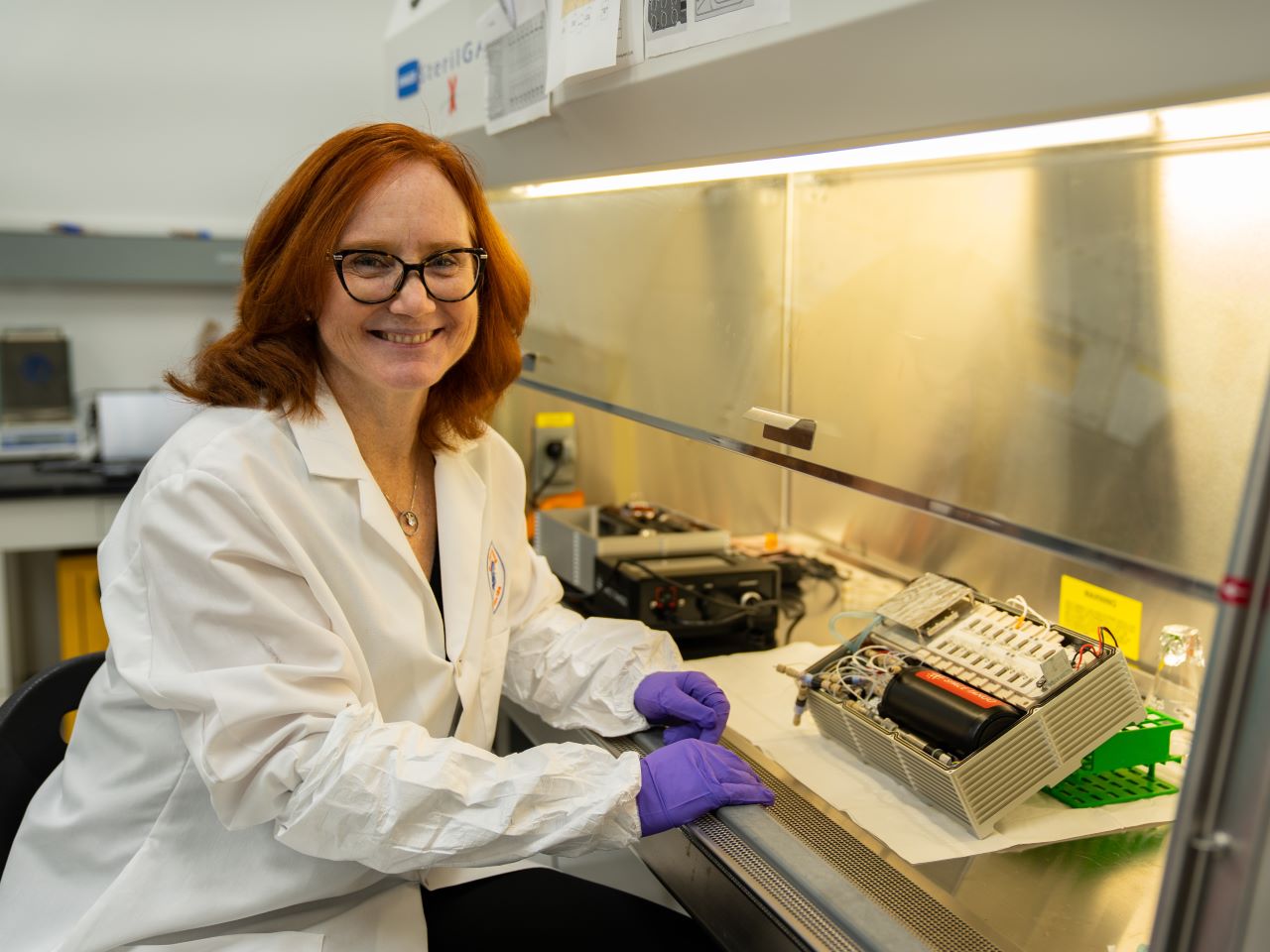Siobhan Malany
Associate Professor
- Gainesville FL UNITED STATES
- College of Pharmacy
Siobhan Malany studies the effects of microgravity on human muscle biology using an automated tissue chip system.
Contact More Open optionsBiography
Siobhan Malany's research seeks to implement improved in vitro cell-based systems to better predict human drug efficacy, particularly for muscle diseases. Her lab has developed a microphysiological system -- also referred to as a “tissue chip” -- to study age-related muscle wasting (sarcopenia). The lab is using patient-specific muscle primary cells in 3D culture integrated into a microfluidic device that was sent to the International Space Station research laboratory in 2020. Another experiment will be sent in 2022 to serve as a micro-scale model for studying physical changes induced in microgravity that may mimic aging and for predictive drug and toxicology testing to aide in the development of therapeutics for sarcopenia. She is a member of the Astraeus Space Institute.
Areas of Expertise
Media Appearances
'Space-Age' Research
UF Department of Pharmacy online
2021-04-15
Second-by-second the countdown clock ticks down. It’s December 6, and Siobhan Malany, Ph.D., and a team of two dozen scientists, engineers and implementation partners have gathered on a causeway inside Kennedy Space Center to watch the launch of SpaceX’s Falcon 9 rocket. More than 6,500 pounds of research and supplies are on board the cargo capsule destined for the International Space Station, or ISS, including a lab-on-a-chip experiment from the University of Florida College of Pharmacy.
Experiment launching from Space Coast to study muscle loss in space
WFTV 9 tv
2020-12-04
An out of this world mission may help University of Florida researchers understand why adults lose muscle strength as we age. The experiment will be inside the rocket scheduled to launch from the Kennedy Space Center on Saturday.
Wisdom From The Women Leading the Space Industry, With Dr. Siobhan Malany, founder and president of Micro-gRx
Medium online
2020-08-17
As a part of my series about “Women Leading the Space Industry,” I had the pleasure of interviewing Dr. Siobhan Malany, founder and president of Micro-gRx.
Modeling Muscle Atrophy in Microgravity: Testing Lab-on-a-Chip Technology
ISS National Laboratory online
2018-11-14
Lab-on-a-chip systems enable higher-accuracy cell culture modeling because they use human cells and closely replicate the conditions in which cell growth takes place in the human body. Using their lab-on-a-chip system to culture human skeletal muscle cells onboard the ISS National Lab, Malany and her team can assess how microgravity-induced muscle atrophy, which occurs at a faster rate than age-related muscle degeneration, affects muscle cell biology.
Articles
Biomanufacturing in low Earth orbit for regenerative medicine
International Society for Stem Cell ResearchArun Sharma, et al.
2021-12-30
Research in low Earth orbit (LEO) has become more accessible. The 2020 Biomanufacturing in Space Symposium reviewed space-based regenerative medicine research and discussed leveraging LEO to advance biomanufacturing for regenerative medicine applications. The symposium identified areas where financial investments could stimulate advancements overcoming technical barriers. Opportunities in disease modeling, stem-cell-derived products, and biofabrication were highlighted. The symposium will initiate a roadmap to a sustainable market for regenerative medicine biomanufacturing in space.
Discovery of small molecule guanylyl cyclase A receptor positive allosteric modulators
PNASS. Jeson Sangaralingham, et al.
2021-12-20
The particulate guanylyl cyclase A receptor (GC-A), via its endogenous cardiac-derived hormones atrial natriuretic peptide (ANP) and b-type natriuretic peptide (BNP), plays a pivotal role in maintaining intravascular volume, arterial pressure, cardiovascular structure, function, and, more recently, metabolic homeostasis. As such, therapies to potentiate GC-A signaling via peptide augmentation have yielded promising results in clinical trials. A major breakthrough in GC-A therapeutics would be a small molecule that sensitizes the GC-A receptor to endogenous ANP or BNP, which to date does not exist.
Discovery of small molecule antagonists of chemokine receptor CXCR6 that arrest tumor growth in SK-HEP-1 mouse xenografts as a model of hepatocellular carcinoma
Bioorganic & Medicinal Chemistry LettersSatyamaheshwar Peddibhotla, et al.
2020-02-15
The chemokine system plays an important role in mediating a proinflammatory microenvironment for tumor growth in hepatocellular carcinoma (HCC). The CXCR6 receptor and its natural ligand CXCL16 are expressed at high levels in HCC cell lines and tumor tissues and receptor expression correlates with increased neutrophils in these tissues contributing to poor prognosis in patients.


